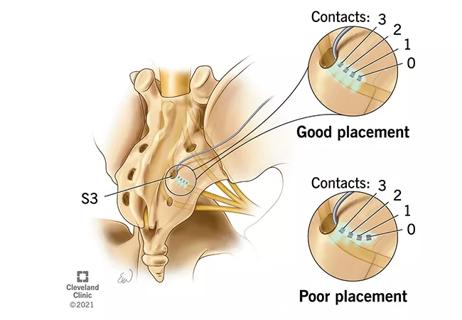Smartphone-based tech lets men avoid laboratory setting

Infertility is a problem that affects couples worldwide, and the cause is male-related up to half of the time. Semen analysis is the standard first-line response to assess this possibility, but it requires expensive laboratory equipment as well as skilled technicians. It also requires men to produce their sample in a sterile laboratory setting, a task that makes a quarter or more of all men uncomfortable. Their hesitation to participate can delay accurate diagnosis of infertility issues and can lead to their partners undergoing more diagnostic testing and treatments than are actually needed.
Cleveland Clinic is a non-profit academic medical center. Advertising on our site helps support our mission. We do not endorse non-Cleveland Clinic products or services. Policy
In light of these dynamics, having an option to produce semen samples and analyze them at home has clear benefits. Several home-based options have been approved for use by the FDA and are on the market today, but, until recently, the available options could only assess sperm concentration, not motility or morphology.
Today’s powerful smart phones offer a possible solution to this problem. They can process information quickly, transmit it to the patient’s physician easily and are already in use by most adults in the United States today.
Doctors at the Cleveland Clinic American Center for Reproductive Medicine, along with a colleague from the University of the Western Cape, Bellville, South Africa, recently undertook a study of a smartphone-based device that was approved by the FDA last year, the YO® Home Sperm Test.
The technology offers video-based testing system capable of measuring motile sperm concentration (MSC), a composite of concentration (number of sperm/mL) and motility (% of moving sperm). It uses the phone’s camera and light source along with a mini-microscope attachment to accomplish this. The results it obtains are reported to the user as low or moderate/normal, explains Ashok Agarwal, PhD, Director of the Andrology Center at Cleveland Clinic.
The study, accepted for publication and scheduled to come out in December 2018 issue of Fertility Sterility, will be presented at the American Society of Reproductive Medicine conference this week in Denver. It compared the effectiveness of the YO device with the SQA-Vision, an automated laboratory semen analyzer.
The double-blind trial analyzed 144 aliquots of semen samples from 24 healthy donors. It assessed accuracy, precision and agreement on the findings and found that overall, the YO device provided good correlation and good-to-moderate agreement with the laboratory equipment for MSC results up to a range of 94×106/mL. Of the 144 semen samples, 55 were found to have MSC values below 6×106/mL.
Dr. Agarwal notes that although there is no single threshold value for predicting male fertility potential, low concentration and motility, along with issues in morphology, are significant indicators of a possible problem.
“We found that a smartphone-based device can provide very accurate and precise reports that are comparable with those that can be obtained in a laboratory, especially when identifying low levels that may require medical intervention,” says Dr. Agarwal.
Allowing men who may otherwise be reluctant to seek medical attention to make this assessment conveniently and privately can help motivate them to seek appropriate interventions at an earlier stage in the infertility cycle, he says. This also improves overall satisfaction with infertility care as it empowers couples to move along in their journey to seek answers.
“This test represents an easy way to get men more engaged in the fertility process earlier, reducing delays in identification of fertility issues and allow appropriate treatments to begin sooner,” Dr. Agarwal concludes.

Review the advantages and disadvantages of newer interventions

Pioneering and refining the approach in pyeloplasty, nephrectomy and more

Unlike earlier pills, new drugs do not cause liver toxicity

Male factors play a role in about half of all infertility cases, yet men often are not evaluated

Hadley Wood, MD, shares her vision as the new editor-in-chief of Urology

Study leverages data from the ROSETTA trial

More on the procedure and the institutional experience

Explain some, but not all, of lower utilization